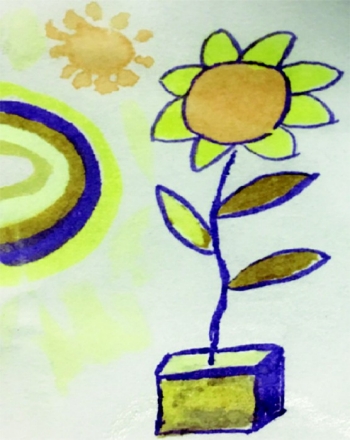Metal-ligand complexes display a range of long-lasting colors that can be erased on demand, allowing paper to be reused
The paper industry has a significant environmental impact, from cutting down trees for raw material to consuming large amounts of energy and water to process that material. To curb that impact, chemists have been working on rewritable paper technologies that would allow people to print on a sheet of paper with special inks and then erase them to reuse the paper.
A team now reports a form of rewritable paper that can display multicolored images and text for months, before being erased and reused time after time.
Previous technologies have involved impregnating paper with colorless dyes that are activated by water sprayed from inkjet printers; others use dyes that show up when exposed to ultraviolet light. But these systems have struggled to create multicolored images, and the printed text rarely lasts for more than a few days.
A team at Nanjing University of Posts & Telecommunications overcame these hurdles, using water-based inks and inexpensive materials to form colored metal-ligand complexes that remain stable for at least 6 months.
The ligands are terpyridine molecules, containing three nitrogen atoms that coordinate to metal ions such as iron, zinc, and cobalt. The terpyridines also carry fluorene or triphenylamine groups that tune their optical properties.
In one demonstration, the researchers coated paper with a thin film of a poly(ethylene glycol) copolymer mixed with a terpyridine molecule. Adding aqueous solutions of different metal ions to the paper—either by freehand drawing or inkjet printing—created long-lasting colored complexes that included brown, blue, yellow and green hues. “It is exciting to see that by simply varying the metal ions, a number of distinct colors can be obtained, and the color intensity remains stable for months,” says Yadong Yin at the University of California, Riverside, who also works on rewritable paper and was not involved in this research.

Using zinc-based inks and a different terpyridine, the team printed a barcode pattern that was only visible under UV light, and which lasted for more than one year. The resolution of these patterns was comparable to that of conventional inkjet printing, and the team suggests the method could be useful for security tags.
The rewritable paper can be erased and reused five times with no significant loss in color intensity. However, the erasure process involves washing with a solution of fluoride ions to disrupt the metal-ligand complexes, a significant drawback for commercial applications. Qiang Zhao, part of the research team, says that they are already working on more practical ways to erase the paper.
In an alternative approach that avoided the fluoride wash, the team coated paper with a colorless zinc-ligand complex that luminesced orange under UV light. Then they printed patterns with an ink of pure water, which disrupted the zinc-ligand coordination bonds and changed the luminescence to cyan. Even after the paper had dried, this UV-visible image lasted for more than 6 months, and could be erased by simply heating at 65°C for 30 minutes.

Zhao adds that the materials they used should not prevent the paper from being recycled once its write-erase cycles are completed, and that experiments with cell cultures showed that the materials all had low toxicity.
The researchers estimate that printing a page of text on their rewritable paper could cost less than one-fifth of a conventional inkjet print on fresh paper. “We are optimistic about the commercialization of rewritable paper,” says Zhao.
Source: C&EN

































Leave a Comment
You must be logged in to post a comment.